
The United States is facing a historic collapse in its birth rate, which has many people scrambling to figure out ways to reverse that trend. If you can believe it, some people think the federal government shutdown might just be part of the solution.
The reason is pretty straightforward: thousands of federal workers around DC will get days of unexpected extra time off. Eventually, they’re likely to get bored of their house chores or other amusements. When that happens, well, then it’s left to us furloughed workers to find some way to entertain ourselves. What ever could we do? Sex, of course!
I’ve written about short-term baby booms before in the case of Iceland’s unexpected soccer victory over England in 2016. I noted that these stories often don’t turn out to be true. In Iceland’s case, skepticism was probably warranted: Iceland’s first- and second-quarter 2017 births were manifestly unimpressive, although full monthly data is not yet available.
So will a shutdown this January give us a baby boom next October? One way to check is to see what happened during the last big shutdown, which occurred in the first two weeks of October 2013. Did we get a big baby boom in July of 2014?
If you look at just the District of Columbia, the answer is yes!
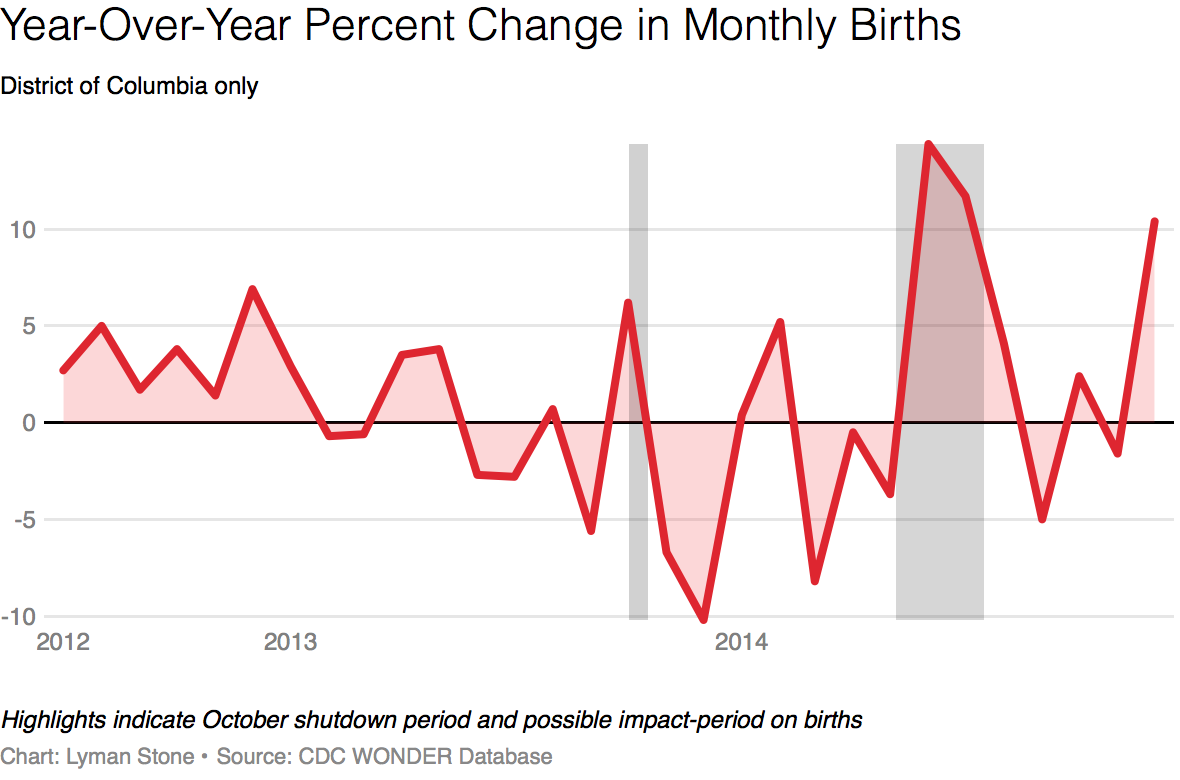
July births to women who reside in the District of Columbia were 12 percent higher in 2014 than in 2013, a true baby boom. But is that really a fair comparison? The shutdown didn’t only affect the District of Columbia. It affected workers throughout the federal government, especially throughout the DC metro area.
County-level monthly birth data is available for Charles, Frederick, Montgomery, and Prince George’s Counties, Maryland; as well as Arlington, Alexandria, Fairfax, Loudoun, and Prince William Counties, and the City of Alexandria; and, of course, the District of Columbia itself. There are missing counties, like most of the Virginia exurban counties and the independent cities like Manassas Park. But, on the whole, the included counties represent the vast majority of the metro area.
Some places seem to experience baby booms. Charles, Frederick, and Loudoun Counties all have strong July births, as does Alexandria city.
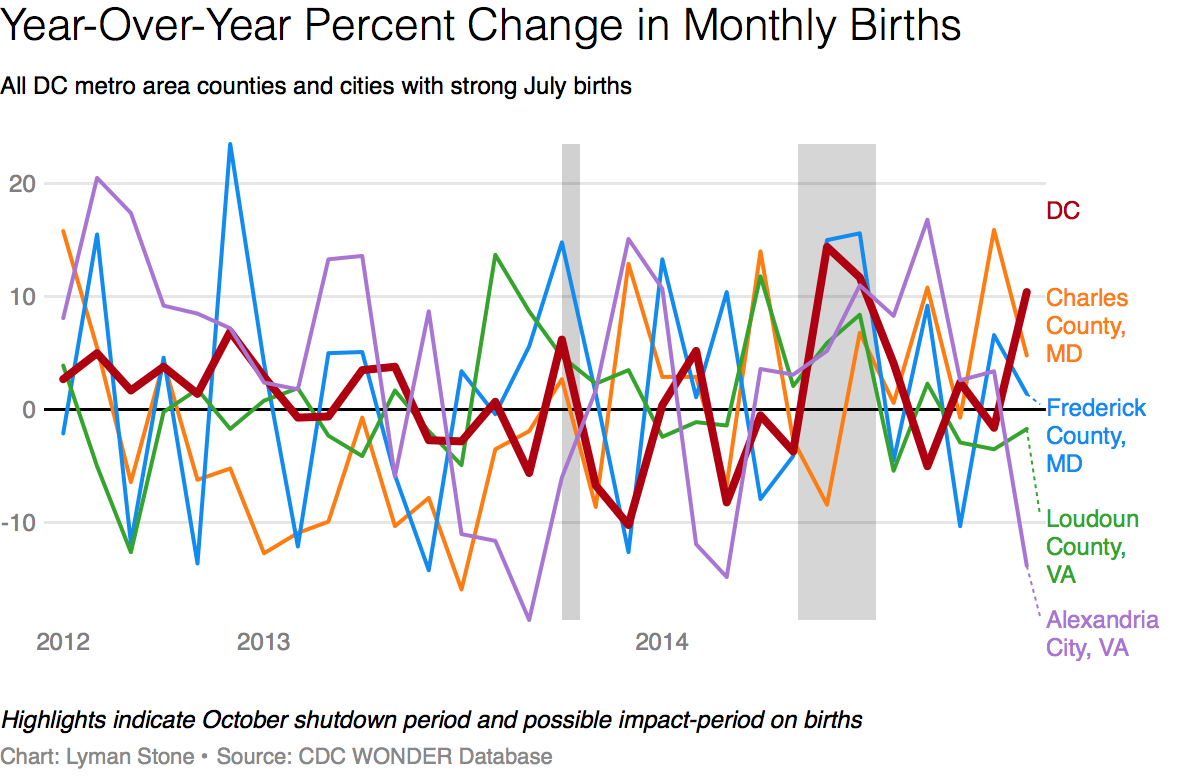
But other areas, like Prince Georges, Arlington, and Fairfax Counties, actually had lower July births than a year previously.
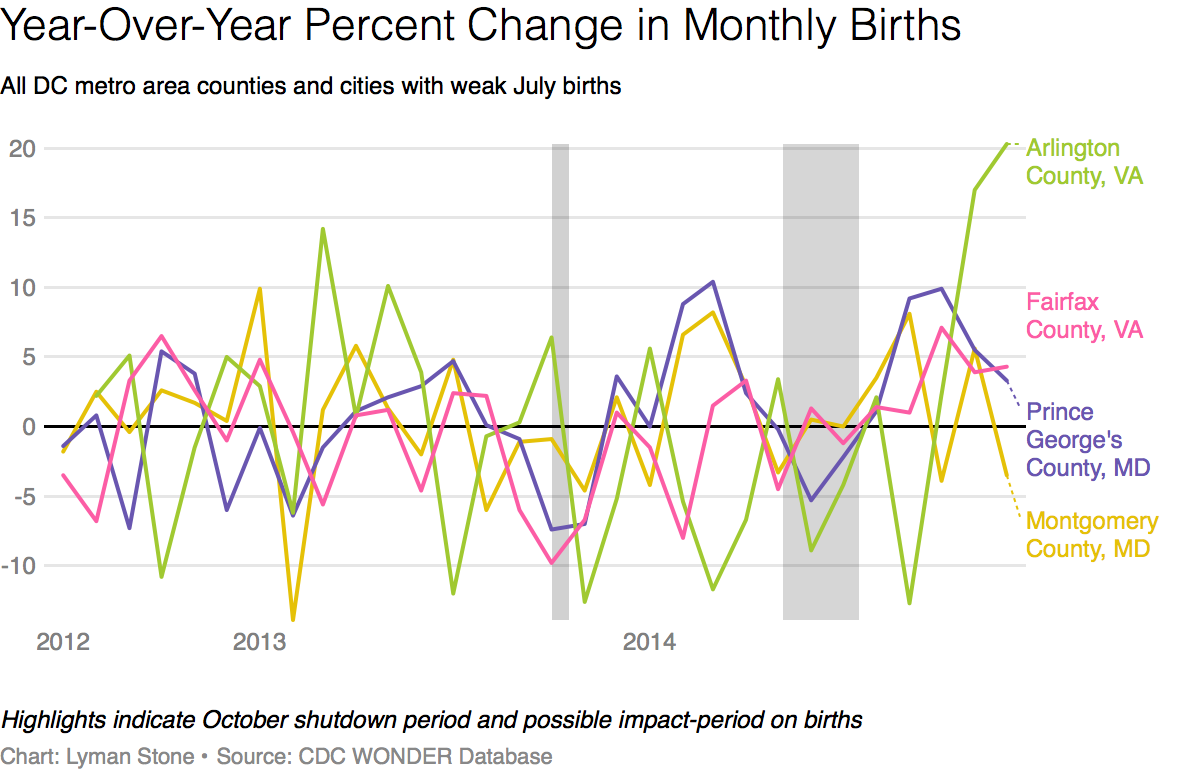
To really know how DC did, we need to come up with a good comparison for DC, a baseline trend to see if DC over- or underperformed. One way economists like to do this is to find regions that have a very similar trend before an event we want to study, but which were not exposed to the event in question, and use those as a proxy for what births in DC would have been were it not for the shutdown.
This is pretty hard to do, since the federal government was shut down everywhere, but we can exploit the fact that federal workers are way more densely concentrated in DC than in most metro areas. To the extent the shutdown effect is truly on federal employees and not on wider society, we should be able to use other nearby metro areas with fewer federal workers as a fair proxy. I’ll use the Baltimore and Richmond metro areas, and see if they closely mirror DC’s births, and, if so, if DC outperforms in July 2014.
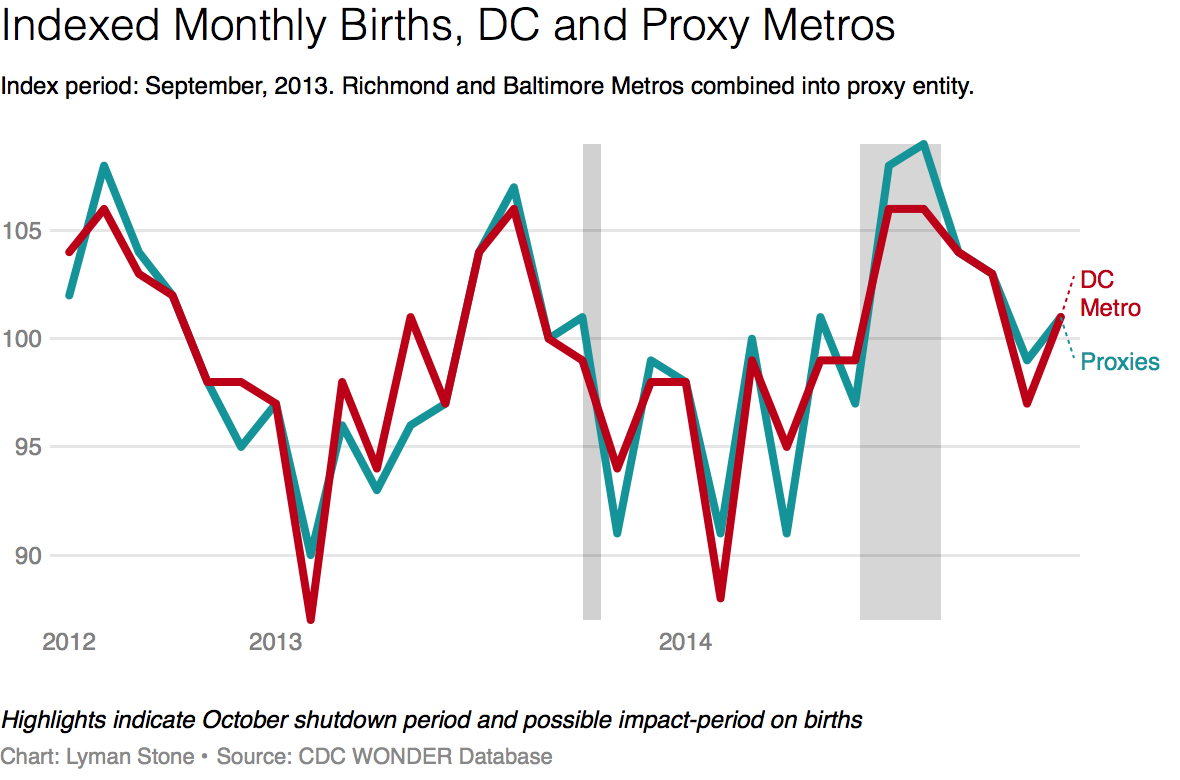
Prior to the shutdown, Richmond and Baltimore had a pretty similar trend as DC. In fact, that trend persists after the shutdown, because the shutdown really didn’t have much measurable effect on DC’s metro-wide fertility rate. If anything, DC underperforms! DC metro area’s baby boom was partly just seasonality, but, overall, it actually had fewer high-season births than Richmond and Baltimore had.
We can also compare just the District of Columbia to Baltimore City and Richmond City. We know that the District of Columbia did see unusually high July births: but was that caused by the shutdown, or did other, similar city-centers have a similar trend?
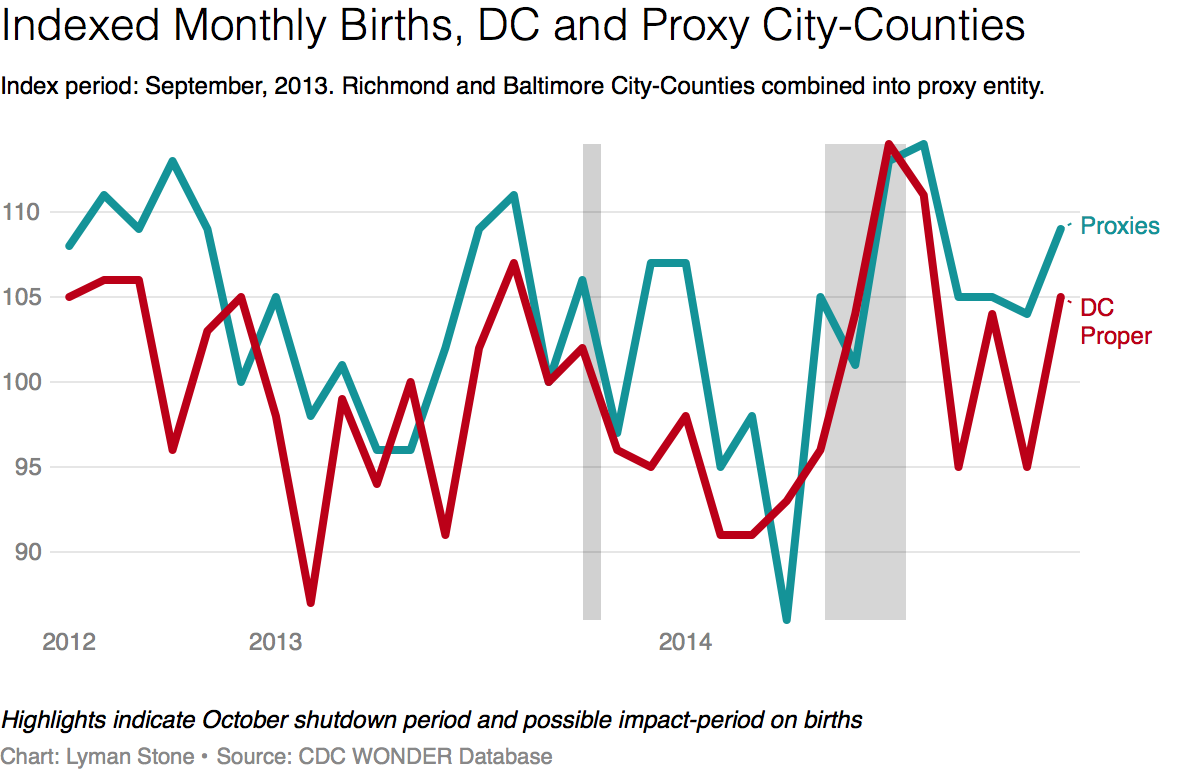
Richmond and Baltimore cities aren’t as good of proxies for DC as the whole metro areas are, but it’s still a reasonable fit. When we compare them, we can see that DC’s boom is unimpressive. Baltimore and Richmond experienced the same strong July births that the District of Columbia did.
So it turns out, sadly, that the embarrassing spectacle of a government shutdown isn’t likely to have a silver lining of babies nine months from now. As much as we might hope that bored federal workers would knock boots and contribute something valuable to the future in the form of some children, the reality is that this shutdown, like most, doesn’t really have an upside.
It’s just going to be another embarrassing, pointless fiasco as our political leadership abdicates the most basic fiduciary duties of the government and plays a blame-game with each other instead of actually legislating. In the meantime, America’s birth rate is going to keep falling to new lows, further weakening the entitlement liabilities driving our current and future budget problems that lawmakers continue to refuse to address.









